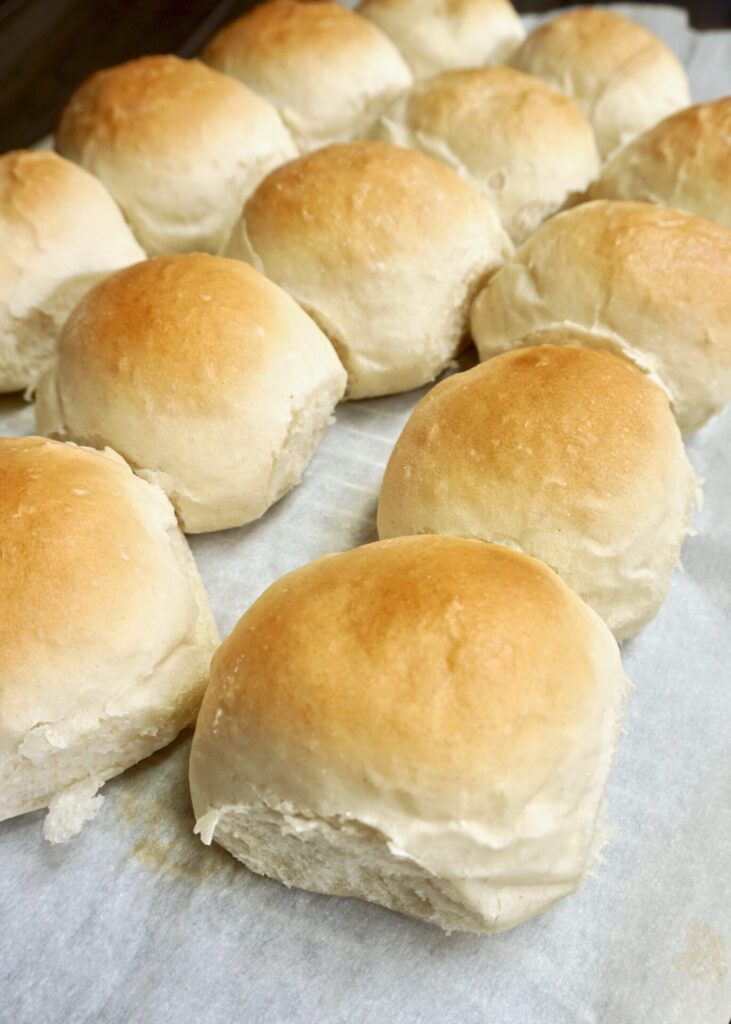
I’m still making my way through the pile (or rather, digital files) of recipes I came to love during my blogging absence. This is one of them I’ve made time and time again now and its debut is overdue. These fluffy soft rolls are similar to french bread in taste and texture. They’re naturally dairy-free (just don’t brush with butter at the end!) and adaptable to whole grains (I’d start by replacing half of the flour with whole wheat).
My tips for roll success:
I almost always knead by hand because I trust myself more than a mixer. There are instructions provided for either method though.
Don’t over-flour the dough! After kneading the dough should still be slightly sticky or “tacky”. If you use some whole wheat flour you’ll need less flour as you knead because whole wheat absorbs more water. No matter the type of flour you use, if you’re baking somewhere humid you might need more flour because the dough will be more wet.
I like these rolls best baked in a 9×13 pan- when they’re crammed together they’re less likely to dry out. And remove the rolls from the oven just when they turn golden brown. There’s nothing more disappointing than over-baked bread. (If you’re bread obsessed like I am, anyway.)
French Bread Rolls
INGREDIENTS
1 1/2 cups warm water
3/4 Tbsp. instant yeast (or 1 Tbsp. active dry yeast)
2 Tbsp. sugar or honey
2 Tbsp. neutral-flavored oil (such as canola, grapeseed, or olive oil)
1 tsp. salt
3 1/2 – 4 cups all-purpose flour
DIRECTIONS
- In the bowl of a stand mixer fitted with the dough hook or in a large bowl by hand, combine the warm water, instant yeast, sugar, oil, salt and 2 cups of the flour. If you are using active dry yeast instead of instant yeast, let the yeast proof in the warm water and sugar for about 3-5 minutes until it is foamy and bubbly before adding the oil, salt and flour.
- Begin mixing, and continue to add the rest of the flour gradually until the dough has pulled away from the sides of the bowl. Begin kneading the dough for 4-5 minutes in a stand mixer (7-9 minutes by hand).
- The dough should be soft and smooth but still slightly tacky to the touch. After a few minutes of kneading, stop the mixer and grab a small piece of dough to test if it needs more flour or not. It might leave a little bit of sticky residue on your fingers, but if you can roll it into a small ball without it sticking all over to your hands, it is good to go. If not, gradually add a bit more flour as needed.
- Lightly grease a container or large bowl with nonstick cooking spray, and place the kneaded dough in the container.
- Cover the bowl with lightly greased plastic wrap or a large tea towel. Let the dough rise until it has doubled (this usually takes about an hour, depending on the warmth of the kitchen).
- Lightly punch down the dough and turn it out onto a lightly greased countertop.
Divide the dough into 12-15 equal pieces, and form the dough into round balls. - Place the rolls in a lightly greased 9X13-inch pan or on a large, rimmed baking sheet lined with parchment or lightly greased. Space the rolls about 1/2- to 1-inch apart.
Cover the rolls with lightly greased plastic wrap taking care not to pin the plastic wrap under the baking sheet or else the rolls will flatten while rising. Let the plastic wrap gently hang over the sides of the pan to fully cover the rolls but not press them down. - Let the rolls rise until very puffy and doubled, about 45 minutes to 1 hour.
- Preheat the oven to 400 degrees. Bake for about 15 minutes until lightly browned and cooked through.
- Immediately out of the oven, brush with butter (optional).
Makes 12-15 rolls.
(Adapted from Mel’s Kitchen Cafe)

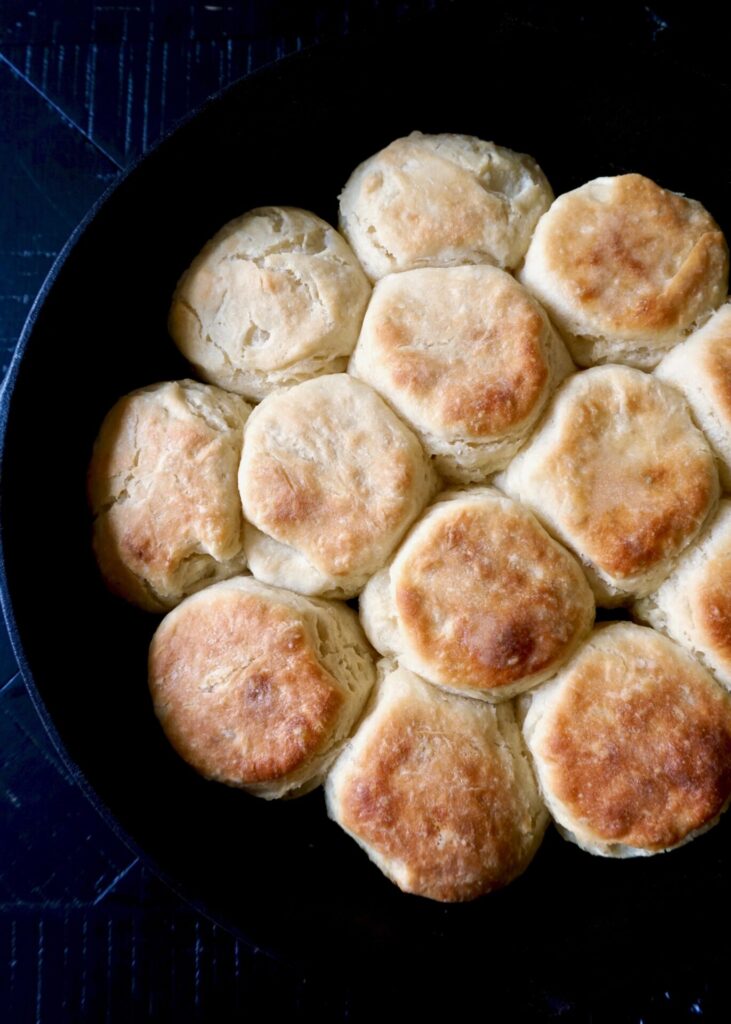
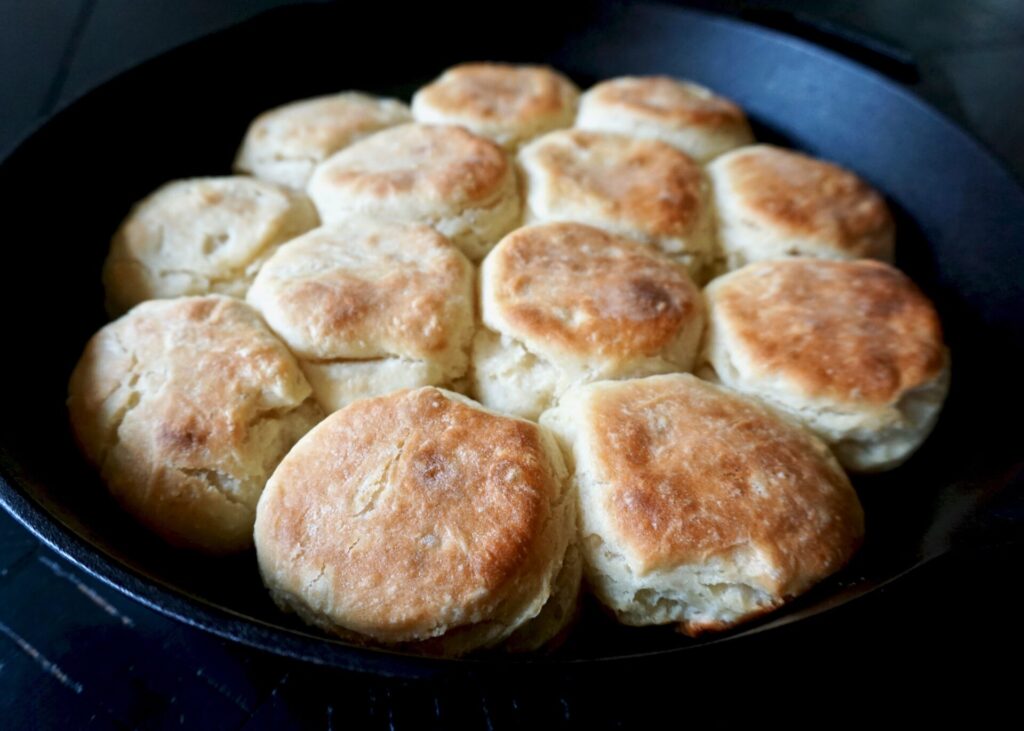
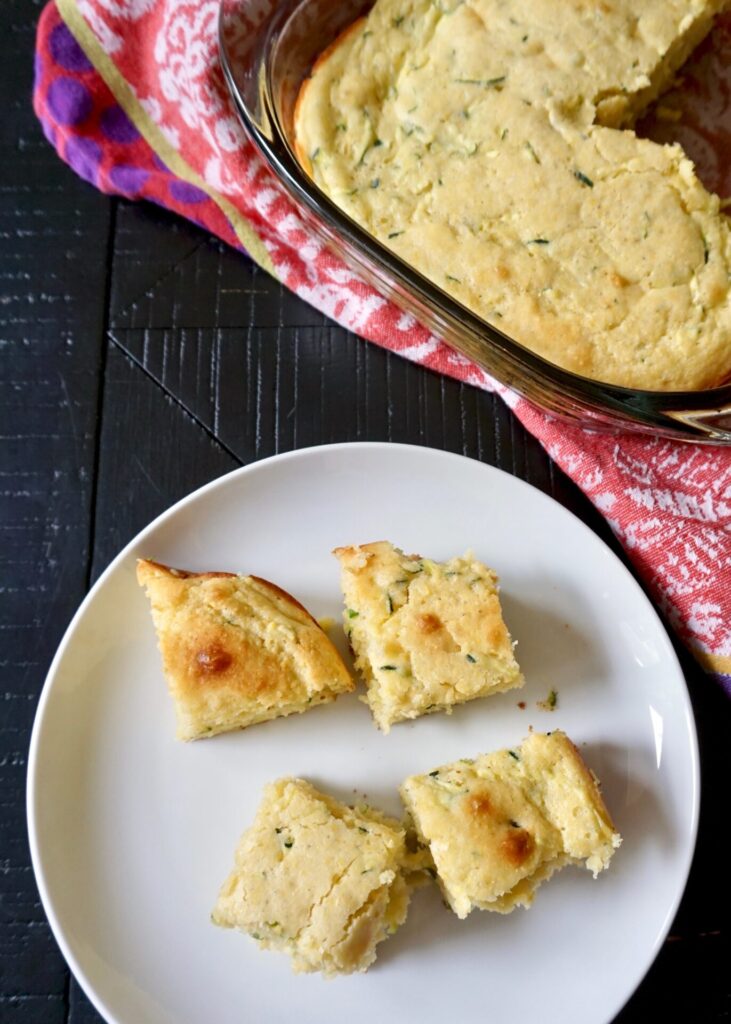
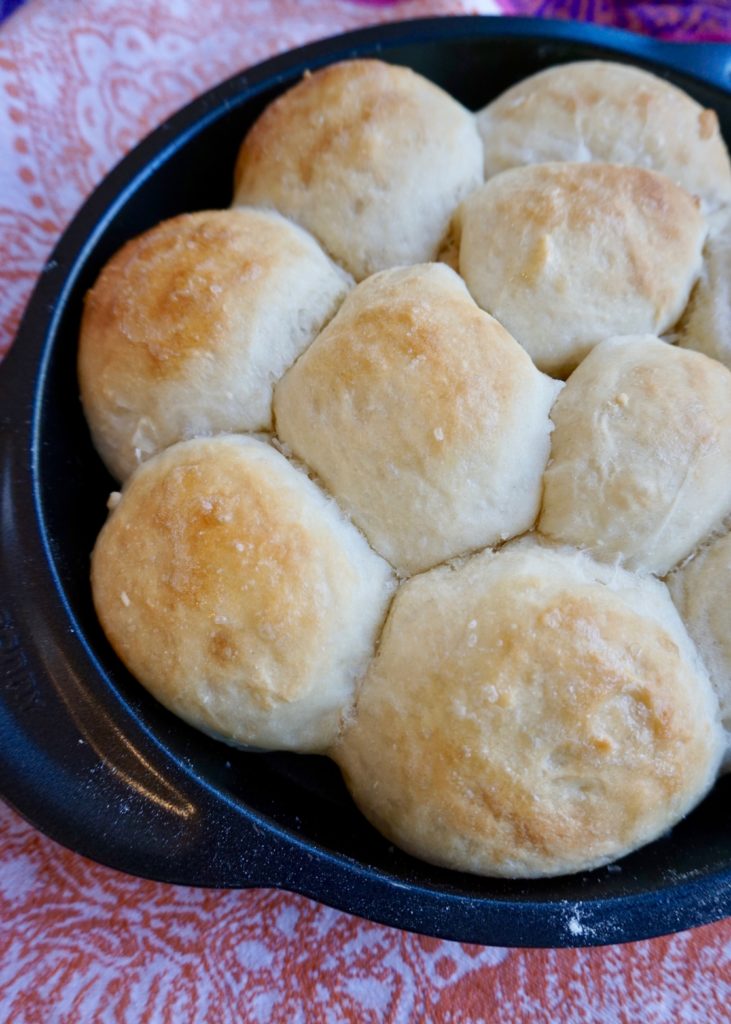
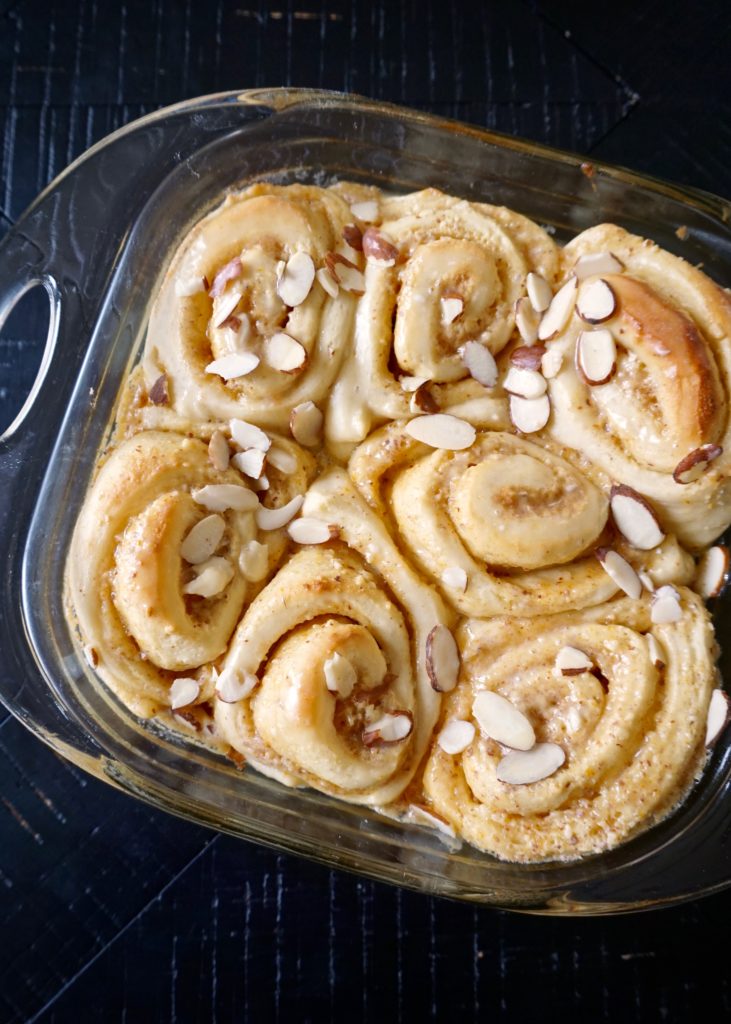
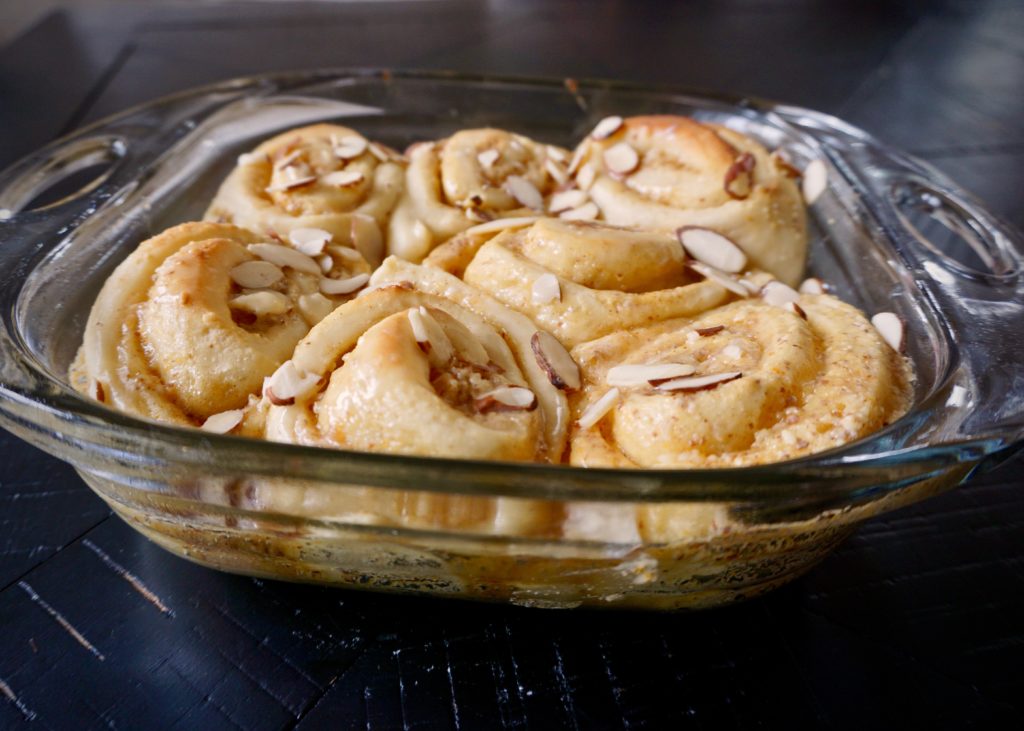
/ 1 COMMENT / Share